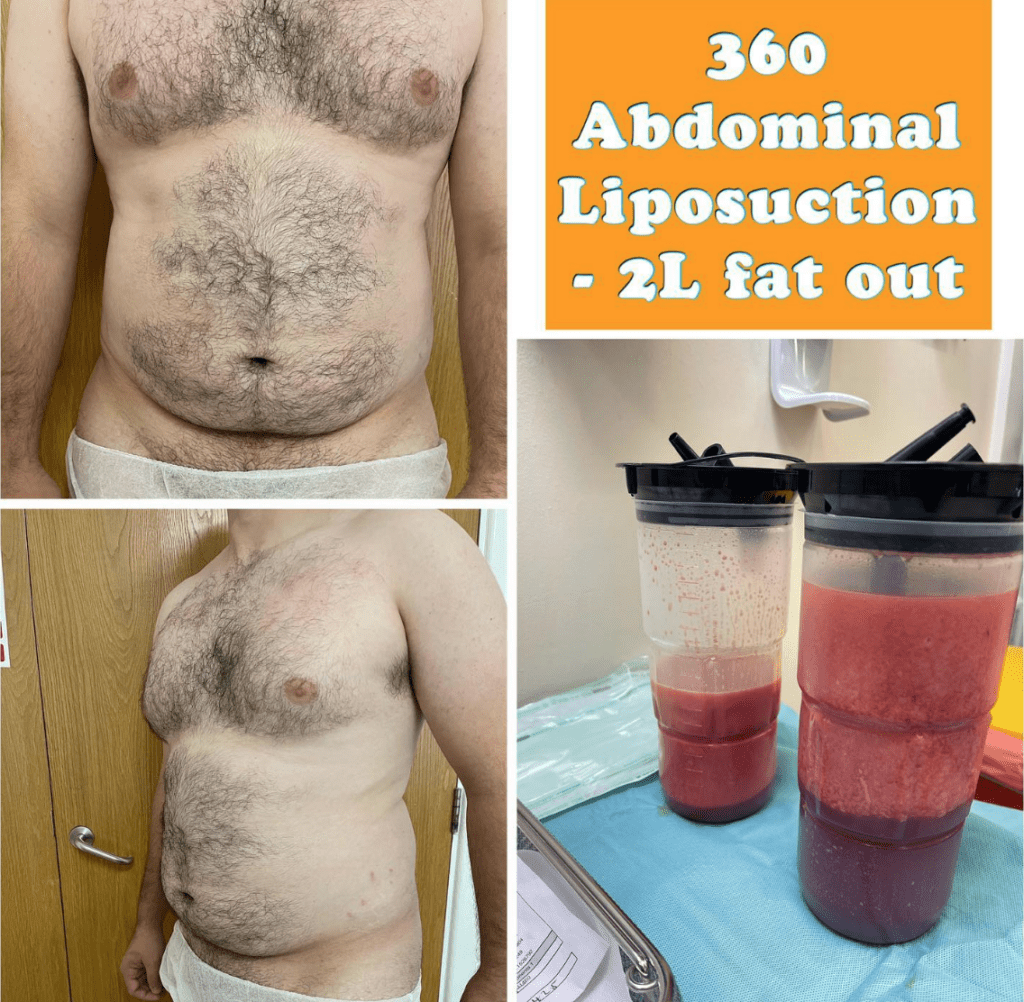Liposuction is one of the most popular cosmetic procedures in the UK, according to a British Association of Aesthetic Plastic Surgeons (BAAPS) audit. Liposuction helps contour the body by eliminating problem areas when all other efforts have been exhausted. The procedure involves making a small incision, about an inch long, through which the doctor inserts the cannula. Because of that, significant scarring is uncommon. However, the incisions eventually scab over, which results in some scarring. So, what should you know about male liposuction scars? Let’s dive in.
What are Male Liposuction Scars?
Male liposuction scars are small, hard to notice and fade with time. Immediately after surgery, the scar may appear reddish or pink. Once the incision heals, the scar will appear like a white line; this usually takes a few months. People with darker skin tones usually develop more visible scars due to the contrast between the scar and the surrounding skin.
However, you shouldn’t expect significant scarring since the plastic surgeon will try to minimise scarring as much as possible. The surgeon will make a very small incision in an area less likely to be noticeable, like the natural folds of the skin. If significant scarring occurs, it is usually due to poor incision placement.
What Causes Male Liposuction Scars?
The appearance of a scar after liposuction is largely determined by the location and size of the incision. The longer the incision, the more visible the resulting scar will be. You might be more concerned about significant scarring if undergoing gynaecomastia surgery. The procedure involves making elliptical incisions around the nipples. The size of the incisions depends on the amount of fat tissue to be removed and whether liposuction is required. Certain practices like avoiding sun exposure, massaging, and cleaning can help minimise the visibility of the scar.

What Kind of Male Liposuction Scars Can I Expect?
The kind of scar that results after your liposuction procedure will depend on the type of procedure and how much fat needs to be removed. Types of male liposuction scars may include:
Abdominal Liposuction Scars
If you don’t have a lot of fat, the plastic surgeon may recommend liposuction alone without a tummy tuck. Fat in such a case is removed using a cannula inserted through small skin incisions. The scars are small and fade over time. You can expect more significant scarring if the doctor combines liposuction and a full tummy tuck.
Gynecomastia Male Liposuction Scars
The procedure is also referred to as male breast reduction. It helps reduce the size of enlarged breasts in men caused by excess fat, glandular tissue or both. The main technique used is liposuction. The resulting scars are located where fat was removed from and are less visible.
Neck Male Liposuction Scars
The procedure helps remove excess fat from the neck and jawline that may cause the appearance of a double chin. The scars that result from neck liposuction are small and located under the ears.
Arm Liposuction Scars
If you have excess fat in your arms, you may be a good candidate for arm liposuction. The goal of the procedure is to shape and contour the arms. The scars that result from arm liposuction are small and usually located in the armpit or elbow.
Thigh Liposuction Scars
Liposuction scars on the legs or thighs result from incisions made during a liposuction procedure. The incisions allow the surgeon to access the fat cells that may be causing problems. The scars may be more noticeable depending on the location, size, skin type and the healing process. The thigh area is usually large, so the scars might also be large, but it’s never the case always. Over time, the scars will fade and become less noticeable as the skin heals.
Do Male Liposuction Scars Go Away?
One of the benefits of choosing liposuction over other invasive procedures is that the incisions are small making the scars relatively small. The degree of scarring, however, varies from one patient to another depending on their inherited scarring tendency and the surgeon’s technique. The scars, however, should fade significantly over the next 6 months to a year.
The best way to prevent significant scarring after liposuction is by choosing a qualified surgeon to perform the procedure. Book a consultation today at the Harley Clinic to discuss your liposuction goals.
Further Reading:













